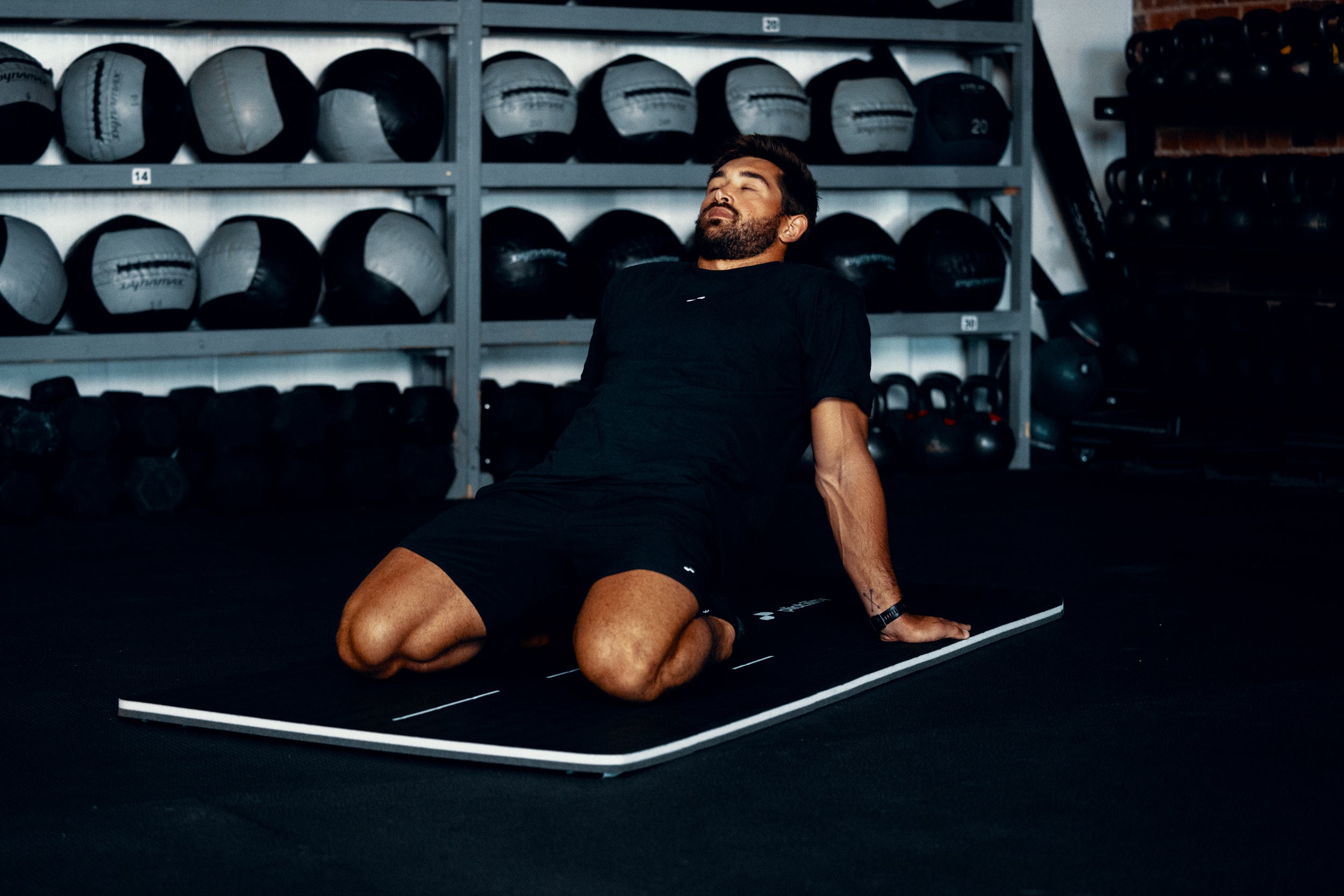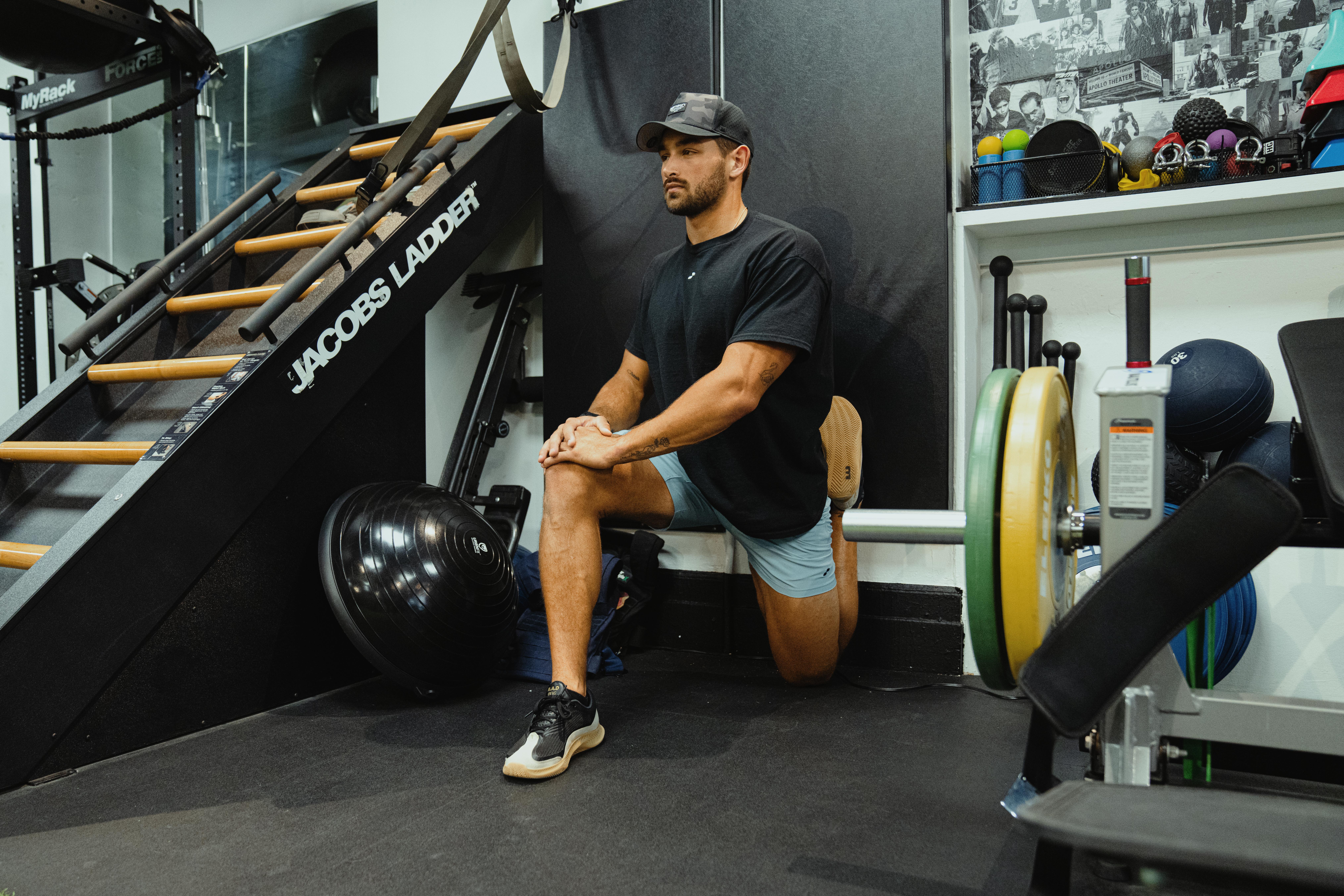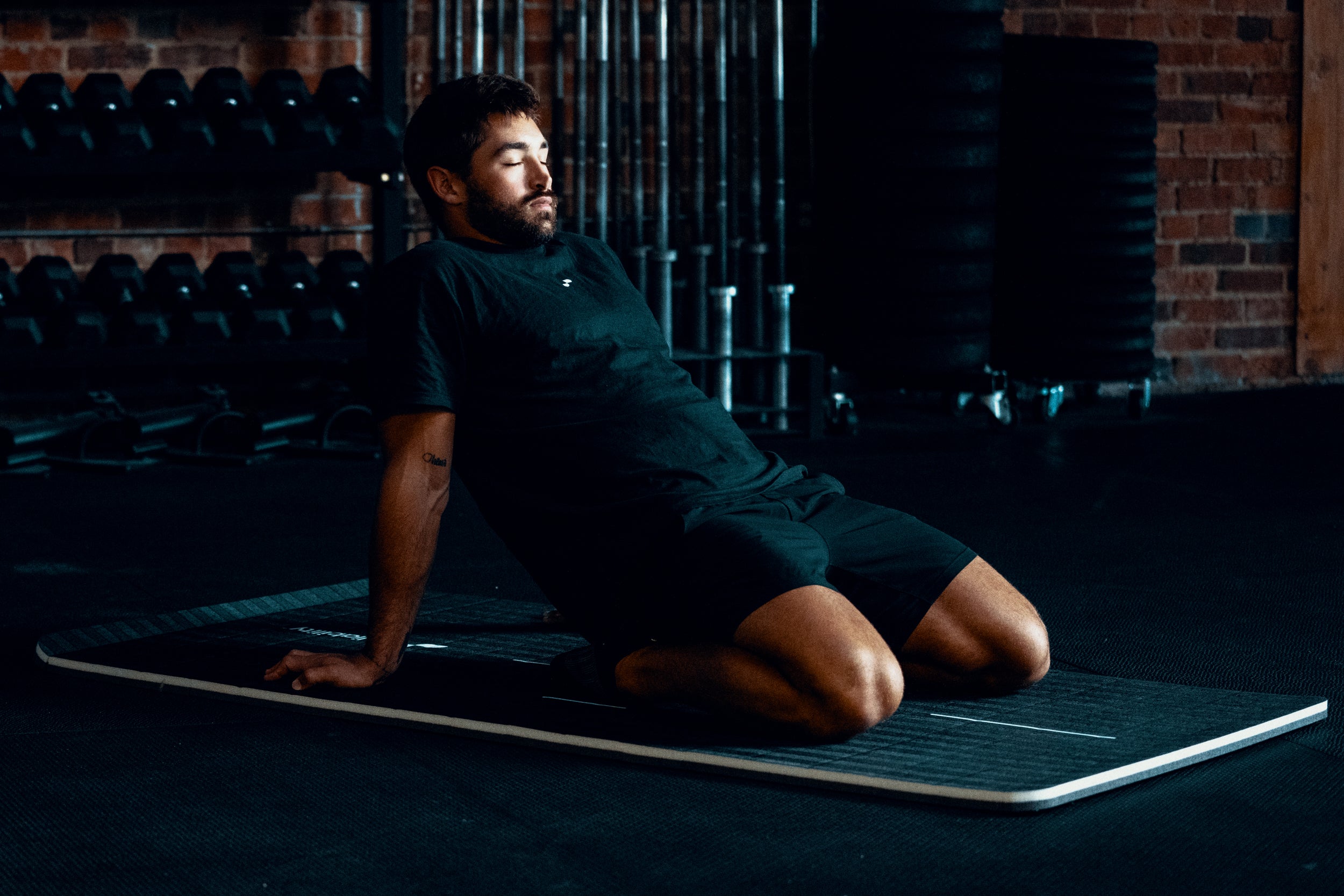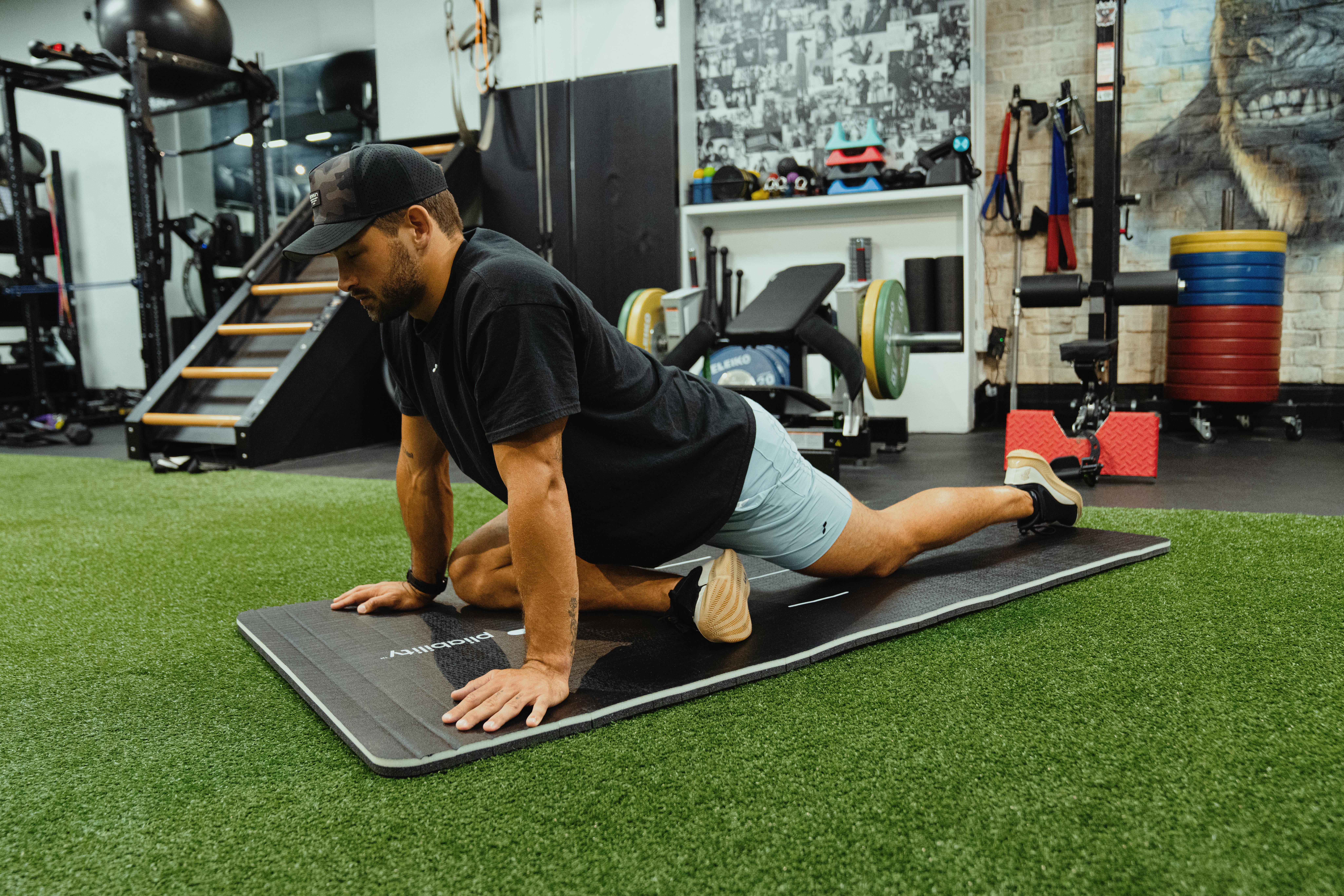In my time as a fitness writer, tight hips have been the most common complaint I’ve faced from readers. So I recruited a flexibility expert to explain why this might be the case, and what people could do to combat it.
“I believe a lot of it comes from sitting,” Cody Mooney, director of stretching app Pliability tells me.” Any time we do something for a long period of time there will be impacts, and these can be positive or negative.”
Sitting at a desk, day after day, can reinforce “poor posture patterns” and hold your hip flexors in a shortened position, leading to tightness, Mooney says. This tightness can make it harder to access certain positions, particularly during sports and strength training exercises like squats. “Compensation happens, and usually when compensation happens you get injuries,” he adds.

One way to counteract this is to strengthen the key muscles in and around the hips. Another is to stretch them. Consistent stretching does the opposite of sitting down all day, Mooney explains, elongating the muscles and “allowing your body to move as it should”.
If you want to give it a go and fight tight hips, Mooney says the three moves below are the best place to start.
How to do Cody Mooney’s stretching routine for tight hips
- Couch stretch
- Saddle
- Twisted lizard
Hold the stretches above for two minutes each. For the couch stretch and twisted lizard, hold them for two minutes on each leg.
“Allow yourself to be passive, don’t push yourself into discomfort where you don’t breathe, you’re sweating, you’re tense [or] it hurts,” Mooney advises.
He says you can do these stretches daily. Over time, he also recommends increasing the amount of time you spend in each position, gradually climbing up to five minutes.
“I think if someone spent five minutes a day in couch stretch, then saddle, then sat in pigeon for three or four minutes a day, that consistency would provide massive benefits,” he adds.
Read more: 14 best exercise bikes for hitting your fitness goals at home
The couch stretch
How to do it

- Kneel in front of a wall or another sturdy vertical surface.
- Place your right knee on the ground, near where the wall meets the floor, and extend your right shin upwards so it runs along the wall. The distance between your knee and the wall will depend on your flexibility level.
- Step your left foot forward into a lunge, so your left knee is forming a rough right angle, then lift your chest and gently push your hips forward.
- Hold this position for two minutes, then repeat on the other side of your body.
Benefits
“This is a wonderful stretch which targets the front of the leg and the hip flexor area,” says Mooney. “If you learn to loosen this area, it will benefit you in many ways.
“With pain, we often have to look up or downstream for the cause. People develop patella tendonitis [knee pain] if they have a lot of tightness in their quads, the muscles on the front of the thigh, as well as lower back pain.”
“Doing the couch stretch – loosening up the quads, hip flexors and piriformis [a muscle running from the lower spine to the top of the thighs] – will really help you loosen up the hips, and [ease] the nagging lower back that many people have.”
Read more: These are the 12 best men’s gym trainers you can buy, according to our expert tester
The saddle
How to do it

- Start in a kneeling position, with your shins flat on the floor and your bum on your feet.
- Keeping your spine long, lean back as far as you are comfortably able, supporting your body with your hands.
- Hold this position for two minutes.
Benefits
“Saddle really hits the quads and hip flexors, which tighten up in that sitting position,” Mooney explains.
The hip flexors are in high demand in daily life too. These muscles’ primary function is bringing the knee towards the chest, meaning they play a role in walking, running, squatting and even standing.
“So much of that is hip flexor, so really you’re creating a tight muscle, leaving it tight, then never doing anything to counter that,” Mooney adds, prescribing the saddle stretch as a first step for remedying this.
Read more: 14 best gym shorts for men, tried and tested by a fitness writer
The pigeon pose
How to do it

- Start by sitting on the floor with your feet planted on the ground.
- Move your right leg so your thigh is straight out in front of you and your shin is lying perpendicular to your torso.
- Reach your left leg behind you so your left foot is flat against the floor, then place your hands on the ground for support and lean over your right knee.
- Hold this position for two minutes, then repeat on the other side.
Benefits
Given how frequently the hip flexor muscles are used on a daily basis, it pays to have them working smoothly. But, as Mooney says, “no lunch is free”, so you need to dedicate some time and effort to keeping them in good nick.
“I think the pigeon pose is great because it really hits the hip, glute and lower back area,” says Mooney. “When you can learn to release that, it can help people in multiple different ways.”
It can ease lower back and hip pain, Mooney says, as well as improving freedom of movement around the joint.
“By stretching, or elongating muscle groups [around the hips] and allowing joints to function properly, you might not take away all of the negatives of sitting at a desk for eight hours every day, but you’re at least being proactive in an approach to counter some of them and allowing your body to get back to its natural, proper position,” Mooney says.













